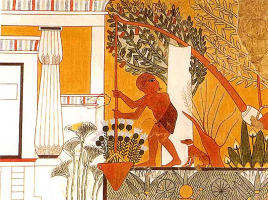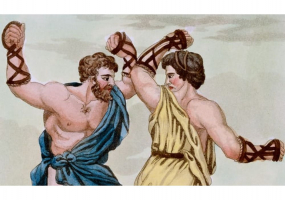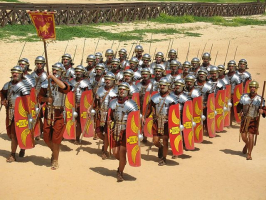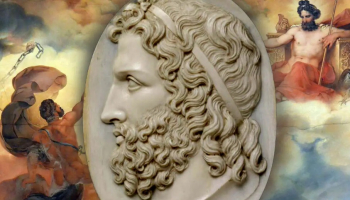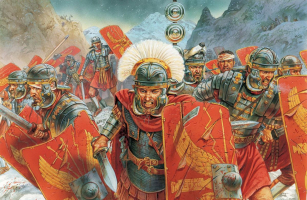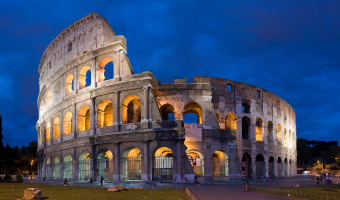Top 10 Ancient Roman Inventions
One of the most important civilizations in human history is generally regarded as the Roman Empire. The Roman Empire had a profound influence on the ... read more...development of western history, creating everything from the Colosseum to aqueducts. Here are some Ancient Roman Inventions.
-
Romans did have something akin to the contemporary system of daily, paper newspapers, however this cannot be claimed. They frequently wrote current events on stones, papyri, or metal slabs that were left in public areas.
Romans were renowned for using official texts outlining military, judicial, and civil matters to contribute to public dialogue. These early newspapers, known as Acta Diurna, or "daily acts," were inscribed on metal or stone and then posted in busy areas like the Roman Forum. Acta are thought to have first appeared around 131 B.C., and they frequently contained information about Roman military victories, a schedule of games and gladiatorial contests, birth and death announcements, and even human interest stories. The Roman senate's proceedings were described in the Acta Senatus, which was also present. These were customarily kept secret from the public until Julius Caesar ordered their publishing in 59 B.C. as one of the numerous populist changes he put into place during his first consulship.
This is one of the Ancient Roman Inventions that served a similar function to that of contemporary newspapers by informing Roman residents of military triumphs, births and deaths, and even human interest stories. Unfortunately, no complete copies have survived.
Photo: Wikipedia 
Photo: Timetoast -
Romans didn't originate the arch, but they did design the architectural arch, which let them build better aqueducts, larger structures, and bridges.
The arch creates a strong tunnel beneath it that may support large structures by directing pressure outward and downward. Compressive stress is what it is termed since the arch's shape compresses the weight's pressure. Ancient architects could construct more elaborate, spacious structures that could accommodate more people and space thanks to the arch.
Romans frequently utilized rounded arches, also known as circular-topped stone arches, and arcades, which are rows of rounded arches placed side by side.
Romans learned how to use arches in the construction of bridges, aqueducts, and buildings in the first centuries BC, which enabled the spread of infrastructure throughout the Roman Empire. The Roman arch contributed to the development of new building techniques throughout Europe and became a fundamental element of Western architecture.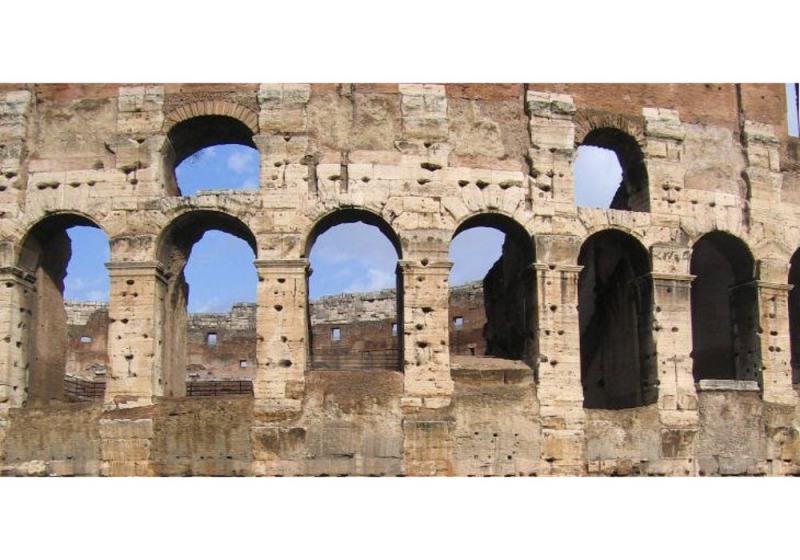
Photo: Ancient History Lists 
Photo: DK Find Out! -
The Romans benefited from a variety of modern conveniences, including fountains, elaborate public baths, subterranean sewage systems, and public restrooms. Without the Roman aqueduct, one of the Ancient Roman Inventions, none of these aquatic advances would have been conceivable. These engineering wonders, which were created for the first time around 312 B.C., employed gravity to convey water via stone, lead, and concrete pipes and into city centers. Aqueducts helped Roman cities break their dependence on local water sources and were vital in advancing public health and cleanliness.
Although there were earlier irrigation and water transportation canals in Egypt, Assyria, and Babylon, the Romans did not invent the aqueduct; instead, they used their expertise in civil engineering to refine the procedure. Eventually, hundreds of aqueducts appeared all over the empire, some of which could carry water up to 60 kilometers. The fact that some Roman aqueducts are still in service today is perhaps the most astounding of all. One of the 11 aqueducts from ancient Rome, the Aqua Virgo, supplies water to Rome's iconic Trevi Fountain.
The aqueducts were linked to a sizable water storage facility, from which the water was then sent to public baths, fountains, farms, and other locations. What might be simple to do today was a spectacular engineering achievement in 312 B.C.
Photo: Encyclopedia Britannica 
Photo: Designing Buildings Wiki -
Romans weren't just about swords and spears; they also created fine medical instruments that had an impact on many contemporary surgical instruments. In fact, it wasn't until the 19th and 20th centuries that the design of some instruments, like the vaginal speculum, underwent major alteration. Romans also made use of modern-looking forceps, syringes, scalpels, and bone saws that were produced by specialized producers.
The Romans developed a variety of surgical instruments and popularized the cesarean section, but their greatest contributions to medicine were made on the battlefield.
Leaders were curious to explore how these gadgets may assist soldiers on the battlefield in addition to employing them at hospitals or medical facilities. Some Roman forces used a skilled chirurgus (basically a doctor with additional training in surgery) to stop blood loss, take out arrows, close wounds, and administer medication.
They developed a military medical corps that was one of the first forces specifically designed for field surgery under Augustus' direction. Through the application of Roman medical advances like hemostatic tourniquets and arterial surgical clamps to stop blood loss, these specially trained medics saved numerous lives. Roman field medics also examined fresh recruits and controlled sanitation in military camps to prevent the spread of sickness. Even before using them, they were known to sterilize the equipment in hot water, establishing a sort of antiseptic surgery that would not become widely used until the 19th century. Roman military medicine was so effective at healing injuries and fostering wellness that even though soldiers were continuously exposed to the dangers of battle, they tended to live longer than the average civilian.
Photo: STAT News 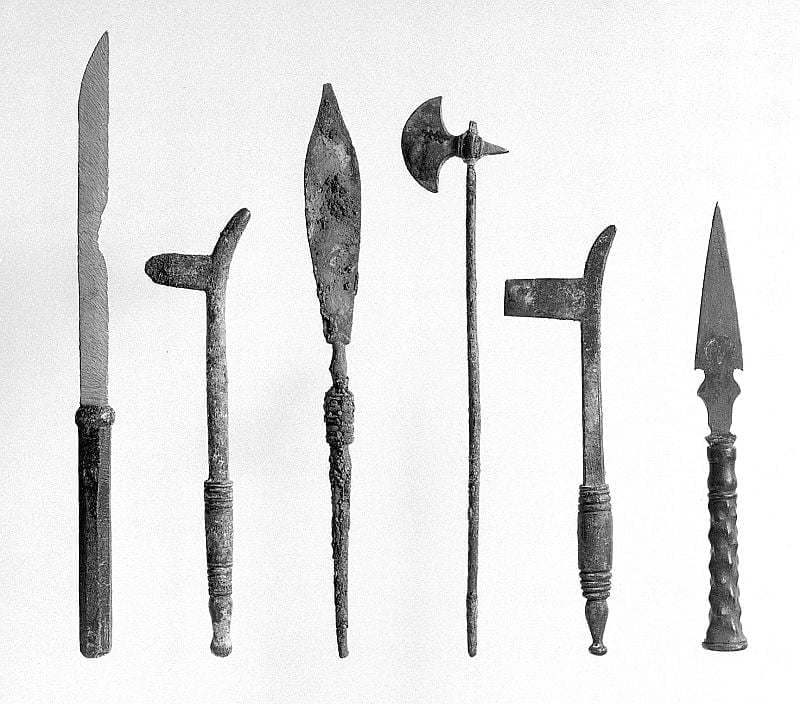
Photo: imperiumromanum.pl -
Concrete may not appear as extraordinary or striking as many of the items on this list, yet it was crucial to Roman culture. The first people to make extensive use of this material were the Romans.
They created a compound from volcanic ash, lime, and seawater that they employed to give their structures more structural integrity. Given how many of their structures are still standing today, they obviously did something right. In actuality, several varieties of Roman concrete could be poured underwater.
The creation of Roman cement and concrete allowed for the preservation of many ancient Roman buildings, including the Pantheon, the Colosseum, and the Roman Forum. Over 2,100 years ago, the Romans employed concrete for the first time in construction. They built everything from bridges and monuments to aqueducts and buildings all around the Mediterranean basin.
Roman concrete had a lower strength than contemporary concrete, but it has shown to be extraordinarily durable because of its special mix of slaked lime and pozzolana, a volcanic ash. This ancient cement was mixed with tuff, which are volcanic rocks, to create concrete that could withstand chemical deterioration. The use of pozzolana allowed the construction of lavish baths, piers, and harbors because it made Roman concrete set swiftly even when submerged in seawater.
Photoo: Wikipedia 
Photo: Science Friday -
Rome may be accessible by all roads, but not all roads are created equal. Roman road construction went beyond simply using gravel and pebbles. Roman roads were incredibly robust no matter the weather since they were built with a combination of dirt, gravel, and bricks manufactured from either hardened volcanic lava or granite.
The Roman empire at its height included over 1.7 million square miles, which mainly consisted of southern Europe. The most advanced road system the ancient world had ever seen was developed by the Romans to enable efficient administration of this vast area. These Roman roads were built using a combination of soil, gravel, and bricks manufactured from granite or solidified volcanic lava; several of them are still in use today. Roman highway designers were held to high standards, producing arrow-straight roads that curved to allow for water drainage. By 200 A.D., the Romans had constructed more than 50,000 miles of roads, mostly for military conquest. The Roman legion could travel up to 25 miles a day on highways, and an intricate web of post houses allowed for the rapid exchange of messages and other intelligence. The management of these roadways frequently resembled that of modern interstates. Stone mileposts and signs provided directions to travelers, while specialized military units served as a sort of highway patrol.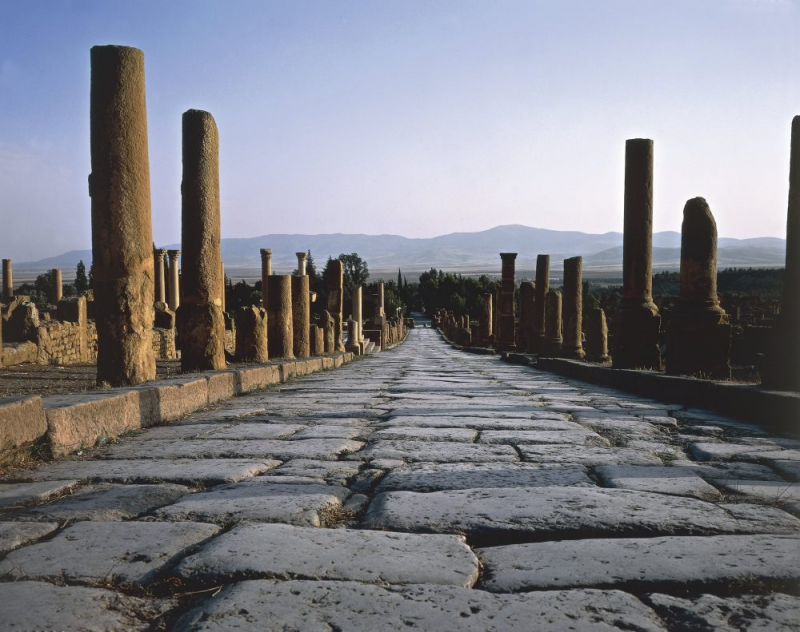
Photo: Curiosmos 
Photo: www.history.com -
The majority of human history was written on awkward clay tablets and scrolls. Writings were mainly either carved into clay slabs or written on scrolls under the Roman Empire. As you might expect, these manuscripts were brittle, difficult to keep, and difficult to move.
The codex, a stack of bound pages considered to be the first form of the book, was developed by the Romans to simplify the medium. The initial codices were composed of bound wax tablets; later, parchment made of animal skin was used instead, which more closely resembled pages. According to ancient historians, Julius Caesar invented the first codex by stacking papyrus pages to make a crude notepad, although bound codices did not become common in Rome until the first century or so.
Julius Caesar ordered the first bound book—a collection of papyrus—to make a codex in place of a scroll, which could be up to 32 feet (10 meters) long and required unrolling to read. This gave information security a safer and more manageable approach to be maintained. A table of contents and index could be used because the codex could carry numerous volumes, had a built-in cover for preservation, and the pages could be numbered for easy reference.
Early Christians employed this one of the Ancient Roman Inventions extensively to create Bible codices, which later spread to other regions alongside Christianity.
Photo: BBC 
Photo: Wikipedia -
355 days made up the Roman republican calendar. It was essentially a lunar calendar, with an intercalary month of 27 or 28 days added once every two years to make up for the difference between the calendar and the solar year. The Pontifices were responsible for the Intercalation, which over time grew erratic due to carelessness and corruption. Because of this, by the 40s B.C., the Roman civic calendar had moved nearly three months ahead of the solar calendar, making it out of sync with the seasons and holy festivals.
Julius Caesar devised a new calendar system with 12 months and a cycle of three years of 365 days, followed by a year of 366 days, in 46 B.C. to remedy this (leap year). The start of the Julian Calendar also changed from March 1 to January 1. The Gregorian calendar was created in 1582 to account for the fact that the year is not exactly 365 and 14 days long. The Julian calendar, which was more precise, had been in use up until that point.
Photo: Wikipedia 
Photo: Natural Grocers -
Rome constantly needed extra room for homes because of demographic concerns. Architects came up with the concept of stacking six to eight apartment buildings around a stairway and central courtyard rather than expanding housing developments outward.
As a result, entire blocks were taken up with apartments, or "insulae" (islands), with roads circling them like water. In Rome, there were about 45,000 insulae by the fourth century A.D. The lower floors' more expensive apartments were referred to as cenacula, while the upper floors' less expensive flats were referred to as cellae.
The top classes preferred their own distinct housing spaces in several parts of the city, leaving the apartments primarily for medium- to lower-class residents. Slumlords, fires, and trash dropping from above-floor apartments were problems for tenants.
Photo: BBC 
Photo: Smarthistory -
Romans did not develop siege warfare, but they made significant contributions to expanding its use and honing its skills.
Greek weapons like the ballista, a catapult that increased the crossbow's range and power, and the scorpion and onager, a torsion-powered siege engine that was typically shown as a catapult with a bowl, bucket, or sling at the end of its throwing arm, were modified and enhanced.
Many contemporary government initiatives, such as those that subsidized food, education, and other costs for the poor, have their roots in ancient Rome. The tribune Gaius Gracchus established the lex frumentaria, a legislation that required Rome's government to provide its citizens with allotments of cheap grain, in 122 B.C., which is when these entitlement systems first appeared. This early type of charity persisted under Trajan, who established the "alimenta" program to aid with the feeding, clothing, and education of orphans and underprivileged youngsters. Later, more things including oil, wine, bread, and pork were added to the list of goods with fixed prices; these may have been purchased with "tesserae" tokens. In spite of the fact that these generous gifts made Roman emperors more popular with the populace, some historians contend that they also contributed to the city-economic state's downfall.
Photo: The Earl of Manchester's Regiment of Foote 
Photo: World History Encyclopedia












